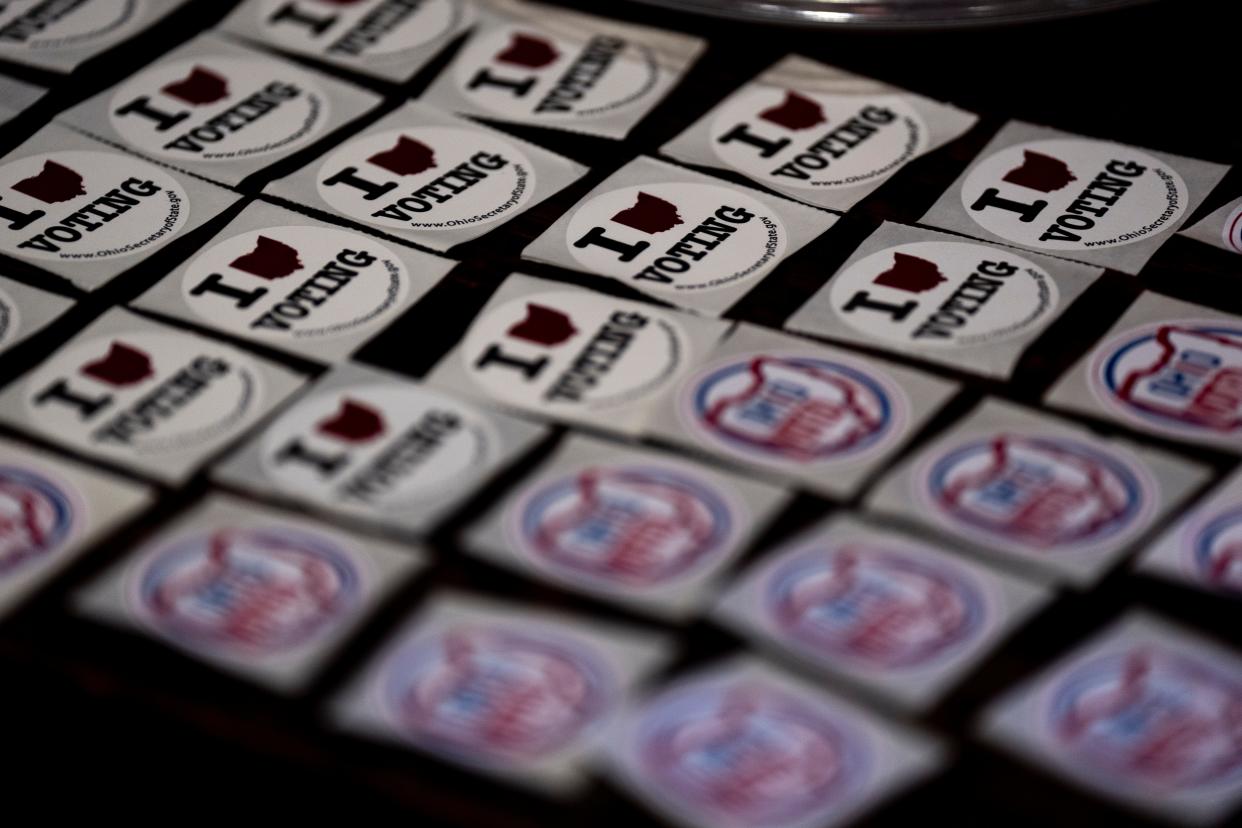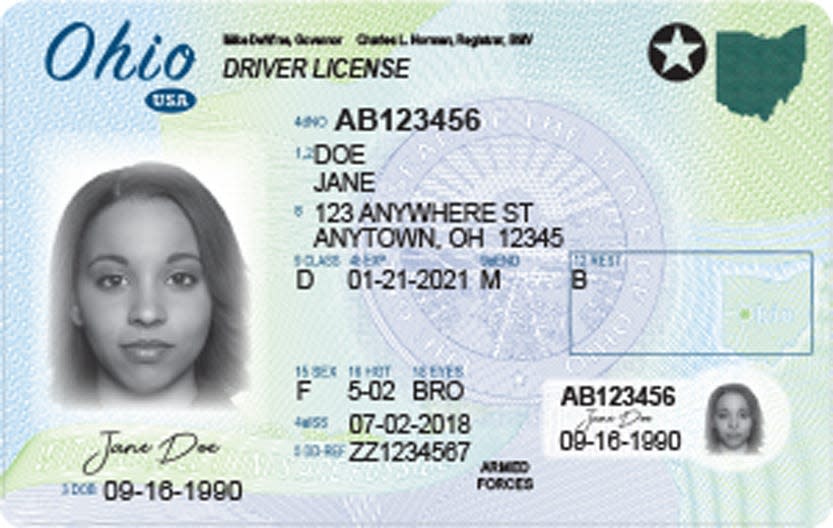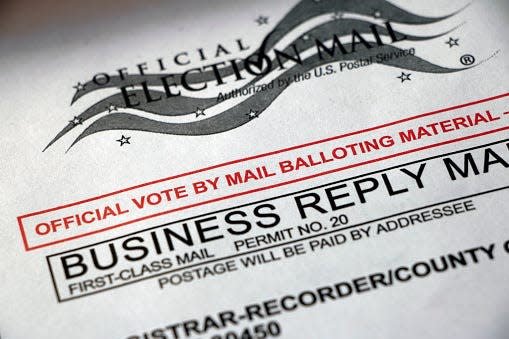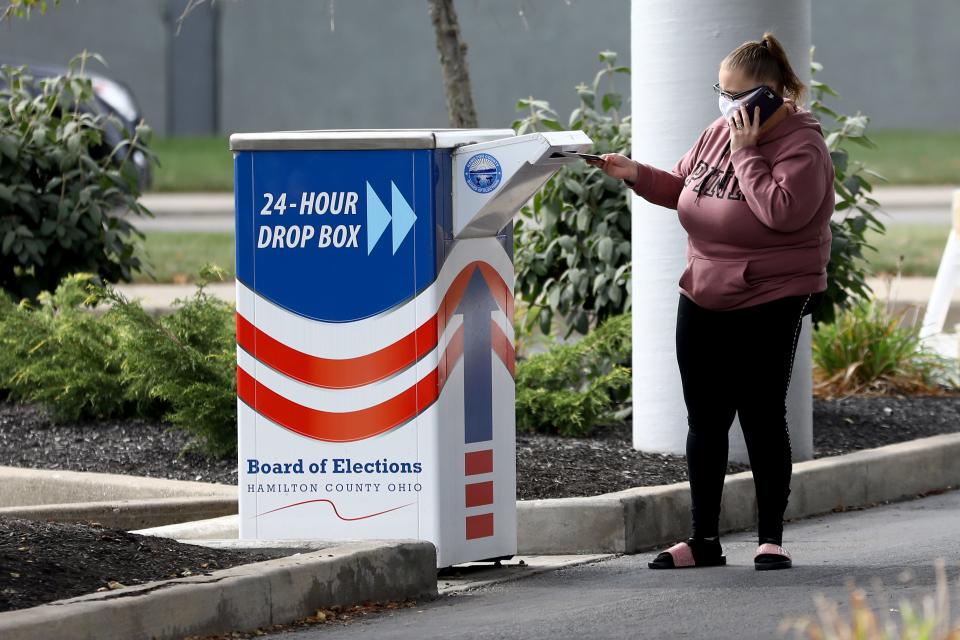What you need to know about Ohio election law changes heading to Gov. Mike DeWine

- Oops!Something went wrong.Please try again later.
Ohio lawmakers rushed a major overhaul of state voting laws through the waning days of their legislative session that would change how voters navigate elections.
The bill, first unveiled by Senate Republicans last week, cleared the House and Senate amid the Legislature's busy lame-duck session. Proponents say the bill would restore trust in elections, but critics contend it's a solution in search of a problem that would ultimately disenfranchise voters.
It now heads to Gov. Mike DeWine's desk for his signature or veto pen.
Here's what you need to know about the legislation.
Would I need a photo ID?

Yes. One of the biggest provisions requires voters to present a photo ID when they cast ballots in-person. That could be an Ohio driver's license, state ID, U.S. passport, passport card, military ID or interim identification issued by the Bureau of Motor Vehicles. The ID does not need to have your current address on it.
Right now, voters can use alternative forms of identification at the polls, such as utility bills or bank statements. That would no longer be permitted.
Ohioans 17 and older would be eligible to receive a free state ID card. Ohio licenses and ID cards must also note if the person is not a U.S. citizen. Voters who have religious objections to being photographed could cast a provisional ballot that excludes them from the ID requirement.
To vote by mail, Ohioans would need to provide a copy of their photo ID, driver's license number or the last four digits of their Social Security number.
What's the deal with mail-in voting?

The bill requires voters who want to vote by mail to submit an application at least seven days before Election Day, instead of three. Those voters must return their completed ballots within four days of the election, instead of 10.
What if I cast a provisional ballot?
Ohioans can cast provisional ballots if they don't have all the necessary information to vote on Election Day. The changes would give those voters four days after the election to provide that information to election officials, instead of seven days.
Boards of elections have until eight days after the election to determine what provisional ballots can be counted.
Will drop boxes be available?

Voters could return absentee ballots to one drop box installed at the county board of elections office. The drop box would be available at all hours from the first day of absentee voting to the close of polls on Election Day.
All drop boxes would be monitored by video surveillance.
All 88 counties would be limited to one drop box per county.
Can I vote curbside?
Curbside voting is prohibited, unless someone has a disability and is unable to enter their polling place. In those cases, voters could cast ballots in their car or at the door of their polling location.
What else did lawmakers change?
The bill eliminates in-person voting the Monday before Election Day and redistributes those hours to another time, a measure backed by local election officials. It also gets rid of most special elections in August unless the county, municipality or school district is under a fiscal emergency.
Do governor, secretary of state support this?
In a statement, Secretary of State Frank LaRose conceded that no legislation is perfect but said lawmakers addressed some of his office's concerns.
“We’ll continue to work with them on other items that either need to be clarified or didn’t make it into the final version," LaRose said. "Overall, the legislature approved some much-needed reforms that will benefit both voters and elections officials, while continuing to make Ohio one of the most honest and accessible voting states in the nation."
DeWine did not signal Thursday whether he plans to sign the bill, but said the final product improved some "substantive problems" in previous versions.
"The last two secretaries of state have both said that we have a very good system in the state of Ohio," he said. "It's easy to vote, hard to cheat."
Voting rights advocates are urging DeWine to veto the bill. A Democratic attorney who sued the Ohio Redistricting Commission over its legislative maps said the state will face a lawsuit if the governor chooses to sign it.
Reporter Jessie Balmert contributed to this report.
Haley BeMiller is a reporter for the USA TODAY Network Ohio Bureau, which serves the Columbus Dispatch, Cincinnati Enquirer, Akron Beacon Journal and 18 other affiliated news organizations across Ohio.
This article originally appeared on Cincinnati Enquirer: Ohio election bill: What you need to know about changes passed

